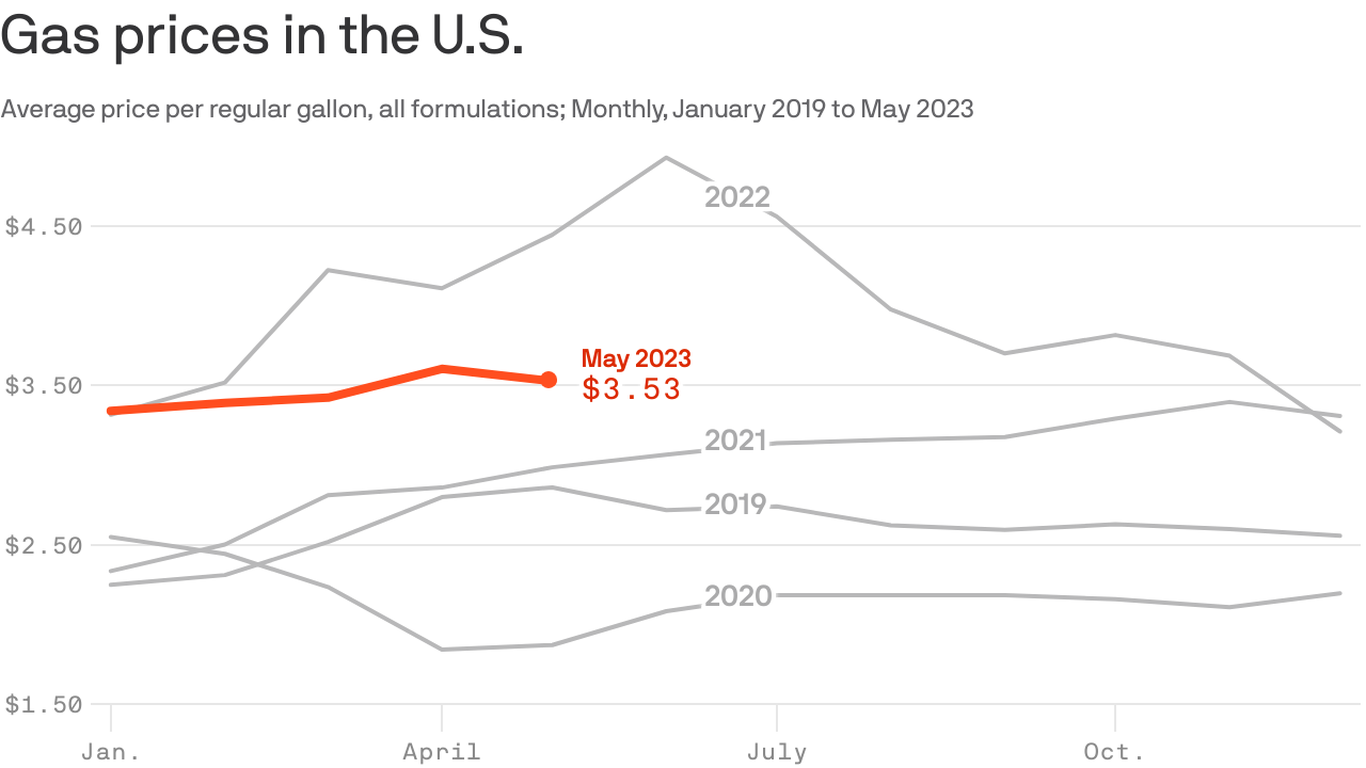The Future Of AI Hardware: OpenAI's Potential Partnership With Jony Ive

Table of Contents
Jony Ive's Design Philosophy and its Applicability to AI Hardware
Jony Ive's legacy is etched in the sleek, intuitive designs that define Apple's product line. His philosophy, emphasizing seamless user experience (UX) and minimalist aesthetics, could revolutionize how we interact with AI systems.
Focus on User Experience (UX) in AI Hardware Design
Ive's unwavering focus on UX translates to intuitive and accessible technology. This is crucial for AI hardware, often perceived as complex and intimidating.
- Intuitive Interfaces: Think of the simplicity of the iPhone interface – a stark contrast to the often-daunting interfaces of many sophisticated tech products. This user-centric approach can make AI hardware accessible to a far broader audience.
- Aesthetic Appeal: Ive’s designs aren't just functional; they're beautiful. This aesthetic appeal can make powerful AI technology less intimidating, encouraging wider adoption. A beautifully designed AI device is more likely to be accepted into the home.
- Examples from Apple: The iPod's ease of use, the MacBook's elegant simplicity, and the iPhone's intuitive touch interface are all testaments to Ive's commitment to UX. These principles, applied to AI hardware, could transform the user experience dramatically.
Minimizing Clutter and Maximizing Efficiency in AI Hardware Design
Ive's minimalist approach isn't just about aesthetics; it's about efficiency. By streamlining design, unnecessary components are eliminated, leading to more powerful and energy-efficient devices.
- Streamlined Design: Consider the slim profile of the MacBook Air or the compact design of the AirPods. Applying this principle to AI hardware could result in smaller, more powerful, and less power-hungry devices.
- Reduced Power Consumption: A minimalist design minimizes unnecessary components, directly impacting energy consumption. This is particularly important for AI hardware, which can be energy-intensive.
- Improved Performance: By focusing on essential components and optimizing their arrangement, a minimalist design can actually boost performance and processing speed.
OpenAI's Hardware Needs and Potential Synergies with Ive's Expertise
OpenAI's ambitious AI models demand immense computational power, pushing the limits of existing hardware. A collaboration with Ive could be transformative.
The Demand for Specialized AI Chips
Training and running advanced AI models like GPT-3 require specialized hardware. General-purpose CPUs and GPUs simply aren't up to the task.
- Limitations of General-Purpose Hardware: CPUs and GPUs, while versatile, aren't optimized for the specific computational needs of AI. This leads to inefficiencies and bottlenecks.
- Specialized AI Accelerators: The need for custom-designed chips (TPUs, specialized ASICs) with architectures optimized for AI workloads is undeniable. This is where Ive's design expertise could contribute significantly.
- Examples of AI Accelerators: Google's Tensor Processing Units (TPUs) and specialized AI accelerators from other companies demonstrate the crucial role of specialized hardware in powering modern AI.
Improving the Accessibility and Usability of AI Hardware
Making powerful AI hardware accessible to a wider audience, beyond researchers and specialists, is paramount. This is where Ive's design philosophy can truly shine.
- Ease of Use: Designing AI hardware with ease of use in mind – intuitive interfaces, clear instructions, and simplified controls – can democratize access to this technology.
- User-Friendly Interfaces: Imagine AI hardware with interfaces as intuitive as an iPhone or iPad. This would remove the technical barriers to entry for many users.
- Affordability and Scalability: By optimizing design and manufacturing processes, a collaboration could lead to more affordable and scalable AI hardware, making it accessible to a wider range of consumers and businesses.
Potential Design Innovations from a Hypothetical OpenAI-Ive Collaboration
A partnership between OpenAI and Jony Ive could spark a wave of groundbreaking design innovations.
Novel Form Factors for AI Hardware
Imagine moving beyond the typical box-shaped server. Ive's creative vision could lead to aesthetically pleasing and functional AI hardware in unexpected forms.
- Radical Design Ideas: Could we see AI hardware integrated seamlessly into furniture, or embedded within everyday objects? The possibilities are endless.
- Different Form Factors: Exploring alternative form factors beyond traditional server racks or bulky desktop units could lead to more space-efficient and aesthetically pleasing designs.
- New Materials and Manufacturing: Utilizing innovative materials and advanced manufacturing techniques could lead to lighter, more durable, and more environmentally friendly AI hardware.
Integration of AI into Everyday Devices
The collaboration could lead to the seamless integration of AI into everyday objects, making powerful technology more accessible and user-friendly.
- Smart Home Devices: Imagine AI-powered home assistants integrated seamlessly into the fabric of your home, working invisibly yet powerfully in the background.
- Wearable Technology: More sophisticated and intuitive wearable devices with AI capabilities, designed for comfort and ease of use.
- User Privacy and Data Security: Naturally, ethical considerations regarding user privacy and data security must be paramount in such designs. Privacy-preserving AI hardware designs are critical for wide-scale adoption.
Shaping the Future of AI Hardware with OpenAI and Jony Ive
A hypothetical partnership between OpenAI and Jony Ive holds the potential to reshape the landscape of AI hardware. By combining OpenAI's cutting-edge AI research with Ive's unparalleled design expertise, we could witness a new era of powerful, yet user-friendly AI technology. The need for both high-performance and user-friendly AI hardware is undeniable for broader adoption. The future of AI hardware rests on innovative collaborations; let's continue the conversation about the potential of partnerships such as OpenAI and Jony Ive to shape this exciting frontier.

Featured Posts
-
 Iam Expat Fair Your One Stop Shop For Housing Finance And Family Fun
May 24, 2025
Iam Expat Fair Your One Stop Shop For Housing Finance And Family Fun
May 24, 2025 -
 Lauryn Goodmans Italy Move The Truth Behind The Kyle Walker Transfer Speculation
May 24, 2025
Lauryn Goodmans Italy Move The Truth Behind The Kyle Walker Transfer Speculation
May 24, 2025 -
 Les Architectes Du Brest Urban Trail Benevoles Artistes Et Partenaires
May 24, 2025
Les Architectes Du Brest Urban Trail Benevoles Artistes Et Partenaires
May 24, 2025 -
 Open Ais Chat Gpt An Ftc Investigation And The Future Of Ai
May 24, 2025
Open Ais Chat Gpt An Ftc Investigation And The Future Of Ai
May 24, 2025 -
 M56 Delays Cheshire Deeside Border Collision Causes Traffic Disruption
May 24, 2025
M56 Delays Cheshire Deeside Border Collision Causes Traffic Disruption
May 24, 2025
Latest Posts
-
 Memorial Day Gas Prices A Decade Low Forecast
May 24, 2025
Memorial Day Gas Prices A Decade Low Forecast
May 24, 2025 -
 Record Low Gas Prices Predicted For Memorial Day Weekend
May 24, 2025
Record Low Gas Prices Predicted For Memorial Day Weekend
May 24, 2025 -
 Sandy Point Rehoboth Ocean City Beaches Memorial Day Weekend 2025 Weather Prediction
May 24, 2025
Sandy Point Rehoboth Ocean City Beaches Memorial Day Weekend 2025 Weather Prediction
May 24, 2025 -
 2025 Memorial Day Weekend Beach Forecast Ocean City Rehoboth Sandy Point
May 24, 2025
2025 Memorial Day Weekend Beach Forecast Ocean City Rehoboth Sandy Point
May 24, 2025 -
 Memorial Day Weekend 2025 Beach Forecast Ocean City Rehoboth Sandy Point
May 24, 2025
Memorial Day Weekend 2025 Beach Forecast Ocean City Rehoboth Sandy Point
May 24, 2025
